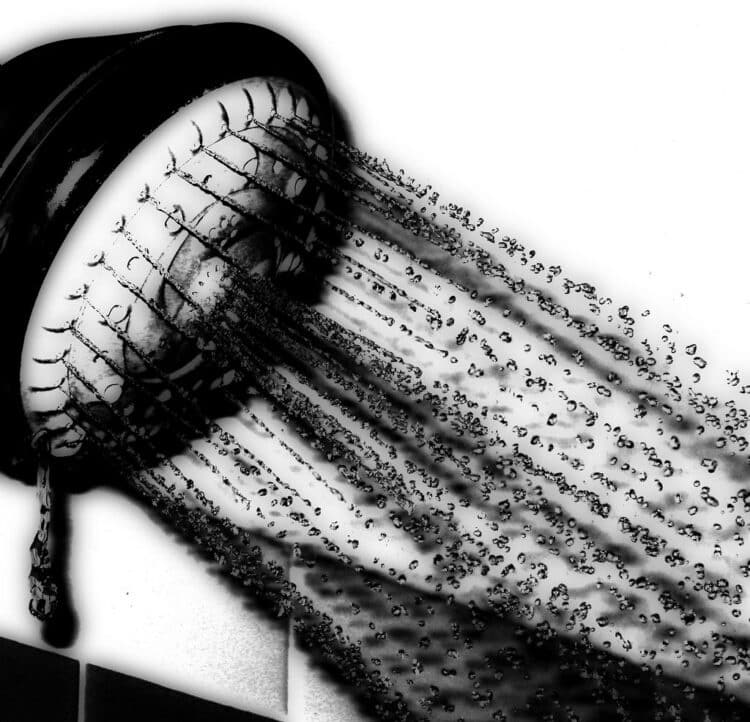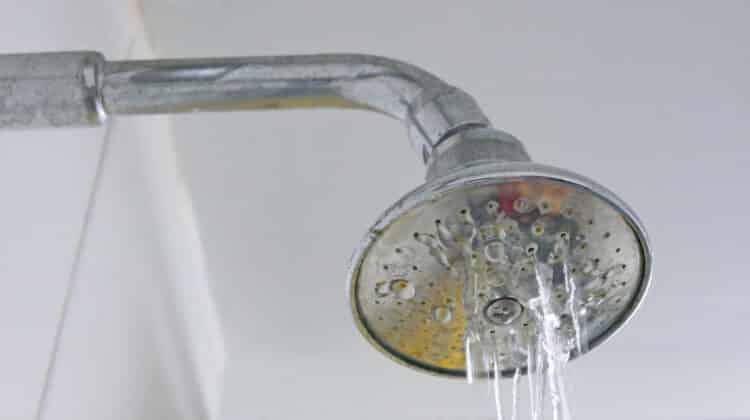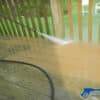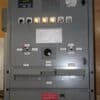
Can a water softener cause low water pressure?
Hard water is one of the issues in the household that creates several problems. Many homeowners and building owners are using water softeners to lower problems caused by hard water.
One of the considerations before installing a water softener system is its effect on the water pressure.
Table of Contents
Does Installing A Water Softener Reduce Water Pressure?
If youre in a hurry, the answer is yes. Albeit slight, there is a possibility that your water softener can reduce the water pressure.
But it isnt always the case. And many other reasons can explain a decreased water pressure.
Not all homeowners who are using water softeners experience a decrease in water pressure.
In most cases, water softeners cause only a minor decrease in water pressure, which is negligible.
How Does A Water Softener Work?
Before we discuss the possible reason that your water softener system can reduce pressure, lets first see how it works.
Unfiltered water that has high levels of calcium and magnesium. These minerals can cause several problems including:
- Scale build-up and clogging of water pipes
- Wears down appliances (coffee machine, dishwasher, ice machines, and water heater)
- Dry and itchy skin and unhealthy hair
- Stains in dishes, sink, and bathroom
Water softeners work by using ion exchange to soften your water.
The mineral tank of the softener system filters the minerals from the hard water. The tank contains small polystyrene resin beads.
The beads are charged with the sodium ion. They have a negative charge. The minerals in hard water are positively charged.
Opposite charges attract each other. So as hard water passes through the chambers, the minerals are drawn to the beads.
Without the minerals, the water is softened and is safer.
If your water softener is working fine, it will not and should not cause the water pressure to decrease.
The process of going through the resin chambers is what generally affects pressure. It can make a very slight change that most owners will not even notice.
But there are also times and instances that the water softener can make significant changes.
Ways you water softener reduces water pressure
- Undersized water softener – The size of the water softener depends on the number of fixtures you have and the amount of water you used. If the water softener you installed does not match your water output, it can result in low water pressure.
- Resin particles in the supply pipe – There is a possibility that the resin beads can get in the supply pipe causing a blockage. It happens if the tank is not cleaned and replaced on time. The tank can break allowing the beads to escape into the pipeline.
- Blockage caused by sand – If your main source of water is a well, there is a high chance that it has a lot of fine sand. Sand can get caught up in the pipes, chambers, and filters causing a blockage.
- Damage caused by chlorine – Chlorine is the most common substance used to clean and purify water.
If your main water source is chlorinated, it can damage the water softener system.
When the chlorine comes in contact with the resin, it causes oxidation. This chemical process can reduce the life of your resin beads. - Blocked resin bed – Tinier particles can escape and enter the resin bed. These can cause a buildup and affect water pressure. Another cause of major blockage in the resin bed is iron particles.
Iron particles in water can come in four forms-
- Colloidal iron is a very tiny iron particle.
- Organic iron appears jelly-like.
- Ferric iron is rust.
- Ferrous iron is clear and can stain the resin bed and other fixtures.
All of these types can cause a buildup and blockage in the water softener system.
-
- Blocked particle filter – Water softener systems come with a particle filter.
Hard water has an assortment of particles including pebbles and dirt. These particles get stuck in the filter.
Over time, the collected particles limit the water that passes through and lower water pressure.
If it is not cleaned, it can cause a complete blockage.
Other Causes Of Decreased Water Pressure
Before you blame your water softener system, here are some other possible culprits that reduce water pressure.
- Pipe leak – A leak in your house pipeline can affect water pressure. Small leaks may not be noticeable at first until flooding happens.
If you notice a decrease in water pressure, you can check your pipe system for any breaks and leaks. Catching these early can save you time, money, and effort on pipe repairs. - Water regulator setting – If the water regulator is turned too low or it’s only partially open, it can cause a decrease in water pressure. But too much pressure can also cause problems.
You can experiment and see what water setting works for you. Make incremental adjustments and observe its effect on the water pressure. - Clogged shower head – Like aerator systems, showerheads can also be clogged with mineral deposits.
To clean it, use the same mixture of vinegar and baking soda. You can put the mixture in a sprayer for easy application.
If you dont have a sprayer, you can put the mixture in a cellophane bag and tie the handles around the showerhead to submerge it. - Clogged aerator screen – If the low pressure is experienced only in one water fixture, chances are it is a result of a clogged aerator screen.
An aerator screen is not expensive and you can easily buy a replacement. But cleaning it is just as easy and cheaper.
To clean it, remove the screen from the faucet. Soak it in vinegar and baking soda or just vinegar.
Leave it submerged overnight or at least until the mineral and other deposits have softened. Use a toothbrush or toothpick to remove the grime. - Pipe corrosion and pipe leakage – Pipe corrosion is common for steel pipes.
Corrosion causes the pipes diameter to get narrower. It limits the water that passes through causing decreases in water pressure.
Pipe leakage can be a result of several reasons. These include:- Broken pipe joints
- Clogged pipelines
- Broken pipe seals
- Movement underground
- Community water system problem – Ask your neighbors if they are also experiencing a decrease in water pressure. If they do, the problem might be in the community water system.
It can be caused by a pipe burst. You can inspect your neighborhood for a leaky pipe.
You can also call your local water department to have it investigated and fixed.
Additionally, a neighborhood decrease in water pressure can be caused by a low water supply.
This can be common during the dry season or in areas where water is scarce.
How To Check If Your Water Softener Is Reducing Water Pressure?
- Check the resin bed – Chlorine in the water can destroy the resin beads. The originated resin turns into a mushy substance.
Instead of acting as filters, they clog the whole system causing lower water pressure.
Bacteria can also cause this.
Clean and replace the resin regularly to avoid it. - Check sediment filter – You can easily access the sediment filter by removing the cover of the water softener.
Check the filter if there is accumulated dirt. These can clog the water going into the treatment system.
If the filter is blocked or full of particles, you can buy and install a replacement.
Another sign of a dirty or old filter is if there is sediment coming out of your fixtures. - Turn on valve – The valve is located before the water softener system. It controls the water going to your house.
If you have only one valve turn it to bypass. If you have two valves, you can see one labeled bypass.
The bypass valve allows the water to flow straight into your home. It essentially bypasses the water softener system.
Next, turn any faucet and see if there is a change of pressure.
Higher water pressure will indicate that there is something wrong with your water softener.
How To Fix Clogging & Blockage In Water Softener Systems?
Here are do-it-yourself remedies in fixing low pressure caused by your water softener system.
- Clean salt formations – While salt is used to clean your water softener, sometimes it can also create a problem.
If there is a hard crust in the brine tank, it can prevent the salt from dissolving in the water.
If it is not flushed out, the salt can recrystallize due to changes in temp and humidity. Other times, it can form into sludges that settle at the bottom of the tank.
Either way, these can cause blockage in the system.
You can remedy this by following these simple steps:- Using any long metal or wood, break the salt formations.
- After that, drain the tank and flush out the salt crystals and sludges.
- Rinse a couple of times to make sure o salt is left.
- Refill the tank.
- Install a bigger water softener – The size of the water softener system you install should match your water output.
If you do not know the right size, you can always contact a professional. - Regenerate your water softer system – Regeneration is the periodic cleaning of the water softener. It involves flushing out the minerals caught in the resin.
It is a vital process that enables the system to keep softening your water.
Here are easy steps to regenerate your water softener:- The first step is called backwash.
It removes the collected particles in the resin bed. To do this, let water flow at the bottom of the tank and up the drain. Aside from removing the particles, this step also expands the resin bed and preps it for the next step. - The second step is the brine draw.
The brine solution is added to the resin bed from the top. Brine solution is a salt-water solution.
The salt content can vary but the recommended is 8-12%. The brine solution will flow down and remove the hardness (minerals) ions from the resin. It replaces them with sodium ions. - Let freshwater flow from the top to slowly drain the brine solution.
The flow rate should be between 0.5 and 1.0 gallons per minute per square foot. This completes the ion exchange. Do this for at least 20 minutes. - Rinse the resin bed one more time with fresh water for 20 to 50 minutes.
The flow rate should be set at 1.5-2.0 gallons per minute per square foot.
- The first step is called backwash.
- Clean and replace particle filter – Water softeners have long life spans. But to ensure this, regular cleaning and maintenance are needed.
If your see that your filter is full of sediment and other particles, clean it as soon as possible. Dirty filters
can cause a buildup of bacteria and cause additional problems.
You can also replace it if it becomes too dirty. The recommended replacement time is six months.
While cleaning is cheaper, it can carry risks. The chemical you use can mix with the water.
You can replace the water filter by doing these steps:- Shut off the main water.
- Press the release button on top of the filter canister to release pressure. If a little amount of water comes out after pressing it, that’s normal.
- Unscrew the canister. You can place a bucket under to catch the water that will come out.
- Remove your old filter.
- Wash the sump with soap and water.
- Place the new filter in the sump. Make sure the filter fits in the raised portion at the bottom of the sump.
- Put lubricant on the O ring.
- Turn the water back on and check for leaks.
- Clean valve injector – Over time, debris can collect and clog the valve injector. An indication of this is the brine tank has high levels of water.
To check, use long-nosed pliers to remove the injector. If the hole is blocked, use a needle to push out the particles. - Replace the resin – If you see small grainy particles in the tank, it means that your resin is has become degraded.
You must drain the old resin and replace it with a new set as soon as you can. The degraded resin can cause problems to the system.
Resin can last up to 20 years if cleaned regularly and properly.
But take note that chlorine can shorten this period. The time would depend on the amount of chlorine in the water.
Conclusion
A water softener system can cause minimal changes in the water pressure. If you clean and maintain it regularly, it should not create major problems.
If you are having water pressure issues, it is good to check the obvious causes first. See if you can fix them yourself.
If you cannot, do not hesitate to call a professional who is trained and equipped to deal with it.





